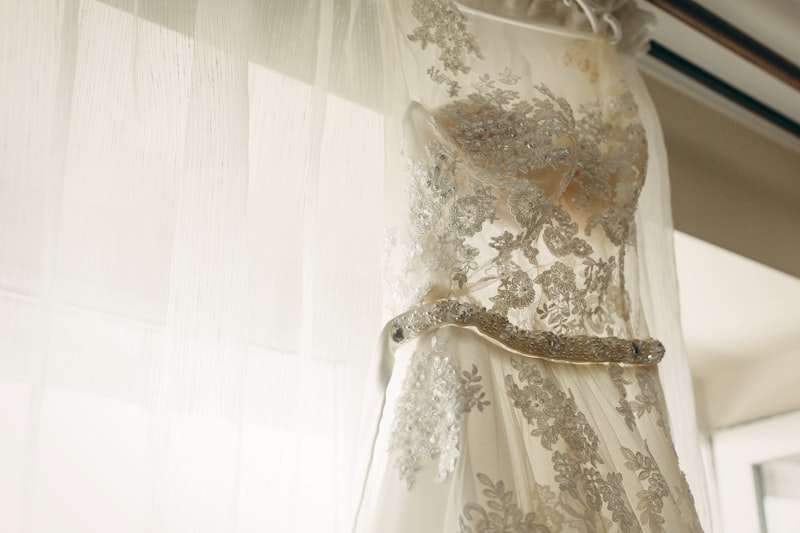Exploring Historical Bridal Style Influences: A Journey Through Time
Exploring Historical Bridal Style Influences: A Journey Through Time
Understanding Bridal Style Influences Through History
Weddings are one of the most significant life events, and the bridal style is a central feature that reflects not only personal taste but also historical influences. The evolution of bridal fashion showcases diverse cultural elements, societal norms, and the artistry of different eras. From the flowing gowns of ancient civilizations to the structured silhouettes of modern-day weddings, understanding the historical bridal style influences offers valuable insights into contemporary marriage celebrations.
The Roots of Bridal Fashion
Bridal fashion has deep historical roots. In ancient civilizations, brides often wore garments that symbolized fertility and abundance. For instance, in Ancient Rome, brides adorned themselves in tunicas, which were light yet flowing, representing purity and connection with the divine. This tradition of donning white garments started gaining popularity in the 19th century, particularly influenced by Queen Victoria's choice of a white lace gown for her wedding to Prince Albert in 1840.

The Evolution of Bridal Styles Across Different Cultures
Across the globe, bridal styles vary immensely, often reflecting the culture, climate, and traditions of the region. Below is a brief overview of bridal styles from four different cultures:
| Culture | Bridal Style | Historical Influence |
| Western | White Wedding Dress | Introduced by Queen Victoria, it symbolizes purity and innocence. |
| Indian | Red Sari | Symbolizes prosperity and fertility, rooted in ancient customs. |
| Chinese | Qipao | A symbol of tradition and elegance, often red for good luck. |
| African | Kente Cloth | Represents cultural pride and heritage, often colorful and vibrant. |
Key Historical Influences on Bridal Styles
Understanding the historical bridal style influences involves delving into significant events and cultural shifts. Below are some of the pivotal moments that have shaped bridal fashion:
The Renaissance Era
The Renaissance period, spanning from the 14th to the 17th century, marked a revival of art and culture, which reflected in bridal fashion. During this era, luxurious fabrics such as silk, velvet, and brocade became popular. Brides adorned themselves with intricate embroidery, pearls, and lace, representing status and wealth. The elaborate gowns of this time often featured rich colors and elaborate embellishments, setting the stage for the opulent bridal styles we see in historical portraits.
The Victorian Era
As mentioned, Queen Victoria's white wedding dress significantly impacted bridal fashion. The Victorian era emphasized modesty, with dresses featuring high necklines, long sleeves, and elaborate trains. Women sought to emulate the elegance associated with the royal family, leading to a shift towards elaborate lacework and veils. The use of white became standard, symbolizing a bride's purity and virtuousness.
20th Century Changes
The early 20th century saw dramatic changes in bridal styles due to historical events such as World War I and the Roaring Twenties. Post-war brides began to favor simpler designs, reflecting the changes in societal norms and values. The flapper style emerged, featuring shorter hemlines and less restrictive silhouettes. Brides embraced minimalist accessories, emphasizing individuality over tradition.
Modern Bridal Styles and Their Historical Echoes
Today, bridal fashion is a tapestry interwoven with historical styles, cultural influences, and personal tastes. While many brides still opt for white dresses, there is a growing trend towards colored gowns, such as blush pinks or deep navy. Designers draw inspiration from various historical periods, creating modern interpretations of past styles.
Customization and Individuality
With the rise of social media and personalized weddings, brides now have the freedom to customize their bridal wear. The influence of different cultures has led to hybrid styles that combine various elements, such as traditional embroidery from one culture paired with a modern silhouette known in another. This blend of influences celebrates diversity and personal storytelling, allowing brides to express their unique identities through their chosen attire.
Bridal Accessories and Historical Influences
Bridal accessories, such as veils, headpieces, and bouquets, also carry historical significance. The veil, for instance, symbolizes modesty and purity, echoing traditions from various cultures. Additionally, floral arrangements hold meanings that are rooted in folklore, with certain flowers representing love, fertility, or good fortune. Understanding these accessories can provide deeper insights into the symbolic meanings of bridal attire.
Conclusion: Embracing Historical Bridal Style Influences
In conclusion, the historical bridal style influences are a testament to the rich tapestry of human culture and tradition. From the opulent gowns of the Renaissance to the minimalist styles of the 20th century, each era contributes to the evolution of bridal fashion. Brides today have the unique opportunity to draw from these inspirations, creating a look that is both reflective of their heritage and expressive of their individuality. When navigating the world of bridal fashion, consider how historical influences can enrich your choice and serve as a meaningful connection to the past.
For brides-to-be, the following suggestions can help you make the most of these historical influences:
- Research Your Heritage: Explore the traditional bridal styles of your ancestry to incorporate meaningful elements into your attire.
- Seek Inspiration: Delve into historical fashion books or exhibitions to discover styles that resonate with you.
- Customize Your Look: Don’t hesitate to mix and match different styles, colors, and fabrics to create a unique bridal statement.
Ultimately, your wedding day is a reflection of your identity, and understanding historical bridal style influences allows you to celebrate not only who you are but also the rich heritage that has come before you.
